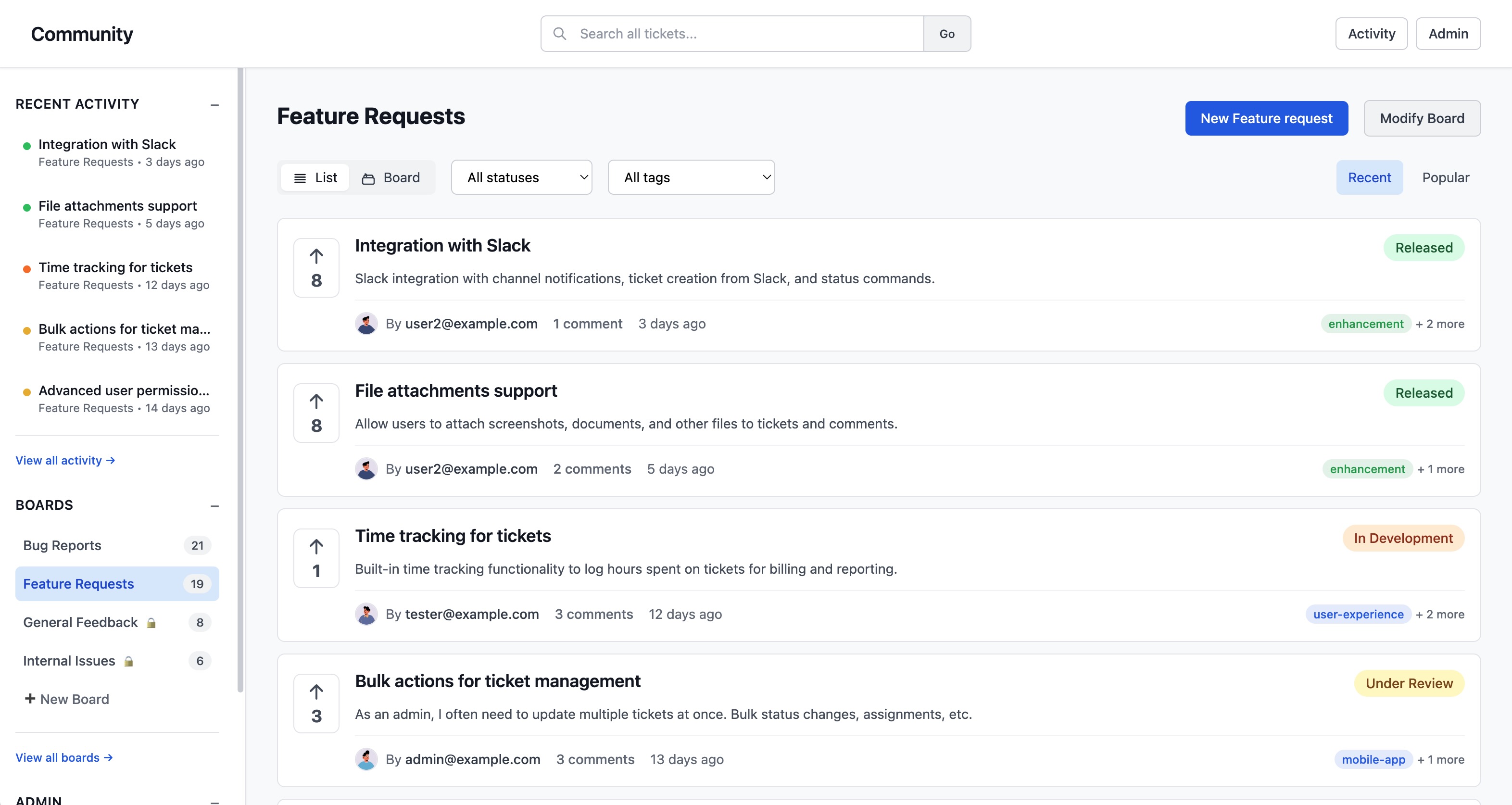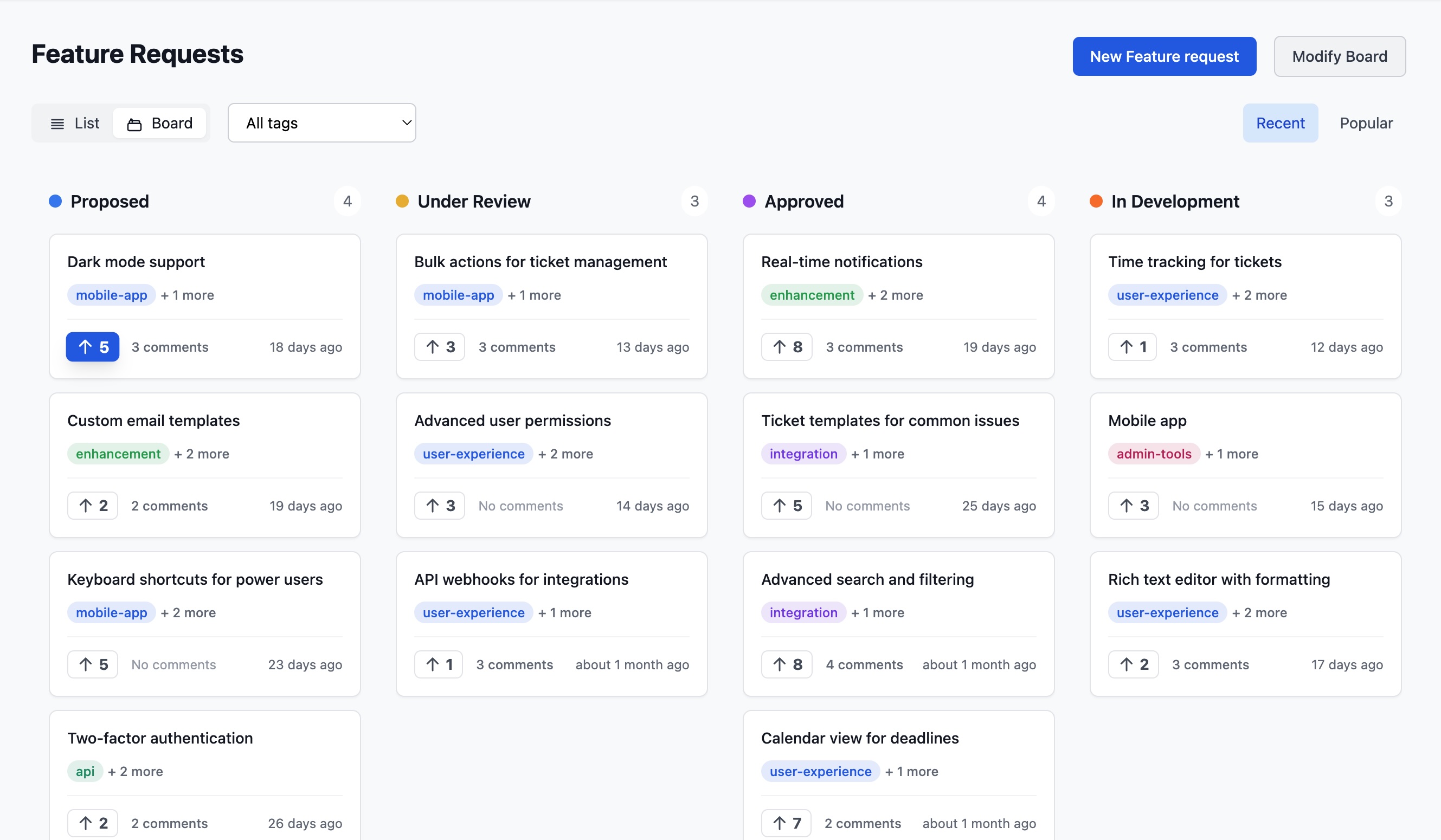See it in action
Don't just read about Alto. Jump into the live demo and see how it feels. It's running on Heroku with full functionality.
Take it for a spin
Create tickets, add comments, vote on stuff, manage boards, poke around the admin interface. It's all there, running in a real Rails app.
Launch demo appWhat you can do:
- • Sign up with any email (include +admin in your email to see the admin dashboard)
- • Create and manage feedback tickets with image uploads
- • Add threaded comments and start discussions
- • Vote on tickets and comments
- • Switch between card and list views
- • Check out the admin dashboard
Demo details:
- • Live Heroku app: Real Rails deployment
- • Fresh data: Resets every 10 minutes
- • No strings attached: Use any email to sign up
- • Full features: Everything you see is what you get
- • Mobile ready: Works on your phone too
Here's what it looks like
Quick preview, but the live demo is way more fun to play with.

Alto's main interface: tickets, voting, comments, and status management. All natively integrated in your Rails app.
